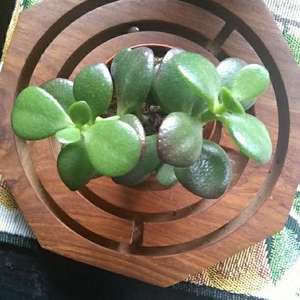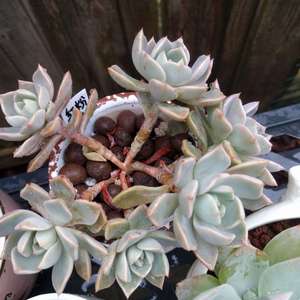文章
Miss Chen
2018年07月15日

A winter garden fills the kitchen with healthy vegetables just when the weather turns cold. Planting a variety of veggies, from broccoli to beets, in August gives the seedlings time to establish themselves in the garden. As the weather cools and frost spreads over the garden, the leaves and roots of many cool-season vegetables become sweeter and tastier.

Cabbage Family
Members of the cabbage family (Brassicaceae or Cruciferae Family) are cool-weather vegetables that thrive in both early spring and late fall until frost. Depending on the species, these vegetables are also grown through the winter in U.S. Department of Agriculture plant hardiness zones 8b through 10. While most of the Brassicas are biennials, they are grown as annuals in the garden and harvested before they flower. Broccoli and cauliflower are exceptions; they are harvested after the flower heads appear, but while they are still immature, before they burst into bloom.
Brassica seedlings are set out in the garden in August for a fall or winter harvest. If the weather is still hot, protect the seedlings from the afternoon sun with shade cloth or sheets suspended on bamboo poles. As the hardiest of the cool-season vegetables, most Brassicas' flavor is enhanced by cold weather and a touch of frost.
Broccoli (Brassica oleracea var. italica) - 50 to 70 days.
Cabbage (Brassica oleracea var. capitata) - 80 days.
Cauliflower (Brassica oleracea var. botrytis) - 60 to 90 days.
Kale (Brassica oleracea var. acephala).
Leafy Vegetables
Leafy vegetables include annuals and biennials, such as beet greens, that are grown as annuals. These cool-season vegetables are planted from August until 60 days before the first frost date.
Beets (Beta vularis) developed for both greens and roots, such as 'Bull's Blood,' which has deep red leaves and roots, are grown through the winter in USDA zones 10 and 11. Lettuce (Lactuca sativa) is also planted in late summer and fall in USDA zones 6 through 8a and in winter in USDA zones 8b through 10.
'Bull's Blood' beet -- 35 days for baby greens and 58 days for roots.
Chard or Swiss chard (Beta vularis var. cicla) -- 35 days for salads and 60 days for mature leaves.
Lettuce -- 40 to 90 days, depending on the variety .
Spinach (Spinacia oleracea) -- 40 to 55 days.
Peas
Peas (Pisum sativum) thrive in cool weather. Plant peas in August or September for a fall crop, before the first frost arrives. Harvest dates vary depending on the variety, ranging from 54 to 72 days. Count back from the first frost date and allow an extra seven to 14 days so the peas have time to develop. If the weather is still hot, provide afternoon shade to protect the developing vines, flowers and pods. Peas grow best when allowed to climb a trellis.

Root Vegetables
Root vegetables that thrive in cool weather are often sweeter after a frost. Plant the seeds in loose, organically rich soil from August until approximately six to eight weeks before the first frost. Root vegetables may be grown in sun or in warm regions, in partial shade.
Beets (Beta vulgaris
var. crassa) - 45 to 65 days.
Carrots (Daucus carota subsp. sativus) - 50 to 80 days.
Radishes (Raphanus sativus) - 22 to 70 days.

Cabbage Family
Members of the cabbage family (Brassicaceae or Cruciferae Family) are cool-weather vegetables that thrive in both early spring and late fall until frost. Depending on the species, these vegetables are also grown through the winter in U.S. Department of Agriculture plant hardiness zones 8b through 10. While most of the Brassicas are biennials, they are grown as annuals in the garden and harvested before they flower. Broccoli and cauliflower are exceptions; they are harvested after the flower heads appear, but while they are still immature, before they burst into bloom.
Brassica seedlings are set out in the garden in August for a fall or winter harvest. If the weather is still hot, protect the seedlings from the afternoon sun with shade cloth or sheets suspended on bamboo poles. As the hardiest of the cool-season vegetables, most Brassicas' flavor is enhanced by cold weather and a touch of frost.
Broccoli (Brassica oleracea var. italica) - 50 to 70 days.
Cabbage (Brassica oleracea var. capitata) - 80 days.
Cauliflower (Brassica oleracea var. botrytis) - 60 to 90 days.
Kale (Brassica oleracea var. acephala).
Leafy Vegetables
Leafy vegetables include annuals and biennials, such as beet greens, that are grown as annuals. These cool-season vegetables are planted from August until 60 days before the first frost date.
Beets (Beta vularis) developed for both greens and roots, such as 'Bull's Blood,' which has deep red leaves and roots, are grown through the winter in USDA zones 10 and 11. Lettuce (Lactuca sativa) is also planted in late summer and fall in USDA zones 6 through 8a and in winter in USDA zones 8b through 10.
'Bull's Blood' beet -- 35 days for baby greens and 58 days for roots.
Chard or Swiss chard (Beta vularis var. cicla) -- 35 days for salads and 60 days for mature leaves.
Lettuce -- 40 to 90 days, depending on the variety .
Spinach (Spinacia oleracea) -- 40 to 55 days.
Peas
Peas (Pisum sativum) thrive in cool weather. Plant peas in August or September for a fall crop, before the first frost arrives. Harvest dates vary depending on the variety, ranging from 54 to 72 days. Count back from the first frost date and allow an extra seven to 14 days so the peas have time to develop. If the weather is still hot, provide afternoon shade to protect the developing vines, flowers and pods. Peas grow best when allowed to climb a trellis.

Root Vegetables
Root vegetables that thrive in cool weather are often sweeter after a frost. Plant the seeds in loose, organically rich soil from August until approximately six to eight weeks before the first frost. Root vegetables may be grown in sun or in warm regions, in partial shade.
Beets (Beta vulgaris
var. crassa) - 45 to 65 days.
Carrots (Daucus carota subsp. sativus) - 50 to 80 days.
Radishes (Raphanus sativus) - 22 to 70 days.
0
0
文章
Miss Chen
2018年07月15日

Before you start a garden in Arizona, remember that your soil is mostly sand. Because sand has almost no nutrients, it will have to be amended with decaying organic matter. Compost is the answer to most of your soil problems in Arizona. Digging in or adding 2 inches of compost on top of the soil will result in more water in the soil and less watering, another highly important element to consider in desert gardening. Grow veggies in raised beds or containers for greater control over soil quality and wind protection.
Hot and Sweet Peppers

Peppers prefer the cooler seasons in Arizona, spring and fall. Plant them in early March from nursery stock (if you can find it) or sprout seeds indoors in the winter to transplant in early March. Or, continue to grow them in containers. Feed peppers plenty of food—water-soluble fertilizer or organic compost—because they are hungry plants.
Eggplant

Eggplant, according to Phoenix Tropicals, grows very well in Arizona, but it is a heavy feeder and needs a lot of water. Grow eggplant in a raised bed to take advantage of the shade that foliage provides for the soil. This will help your soil conserve water. Plant eggplant in March, so its growing season is long enough to avoid winter's killing frosts.
Melons

Melons do well in the Arizona heat but they are also a favorite of whiteflies, which descend en masse in early June. If they survive the onslaught, they will be delicious. Plant them as early as possible in spring to get as much growth as possible before the flies descend.
Herbs

Rosemary, oregano and dill are extremely easy to grow in desert conditions. Rosemary requires very little water and loves the sun. Grow it in pots or as a bushy groundcover as part of the landscape. Phoenix Tropicals categorizes dill as a weed in Arizona: It will grow everywhere, even if you aren't all that interested in it. Oregano needs some light shade and weekly watering to thrive. Of course, many herbs will grow very well indoors in pots, on the windowsill or in a sunny room.
Tomatoes

While tomatoes are everyone's favorite, they are also the favorite of nearly every garden pest that exists in Arizona. The irony is that Arizona is the tomato-production capital of the United States, but almost all of those tomatoes are grown hydroponically; lack of soil eliminates pests. If you can grow them in containers, the risk of insect infestation and disease is greatly reduced. Remember, any plant grown for its fruit requires at least five hours of sun each day. The Maricopa County Extension Office recommends the addition of reflective material around container plants: aluminum foil, white-painted surfaces or marble chips.
Hot and Sweet Peppers

Peppers prefer the cooler seasons in Arizona, spring and fall. Plant them in early March from nursery stock (if you can find it) or sprout seeds indoors in the winter to transplant in early March. Or, continue to grow them in containers. Feed peppers plenty of food—water-soluble fertilizer or organic compost—because they are hungry plants.
Eggplant

Eggplant, according to Phoenix Tropicals, grows very well in Arizona, but it is a heavy feeder and needs a lot of water. Grow eggplant in a raised bed to take advantage of the shade that foliage provides for the soil. This will help your soil conserve water. Plant eggplant in March, so its growing season is long enough to avoid winter's killing frosts.
Melons

Melons do well in the Arizona heat but they are also a favorite of whiteflies, which descend en masse in early June. If they survive the onslaught, they will be delicious. Plant them as early as possible in spring to get as much growth as possible before the flies descend.
Herbs

Rosemary, oregano and dill are extremely easy to grow in desert conditions. Rosemary requires very little water and loves the sun. Grow it in pots or as a bushy groundcover as part of the landscape. Phoenix Tropicals categorizes dill as a weed in Arizona: It will grow everywhere, even if you aren't all that interested in it. Oregano needs some light shade and weekly watering to thrive. Of course, many herbs will grow very well indoors in pots, on the windowsill or in a sunny room.
Tomatoes

While tomatoes are everyone's favorite, they are also the favorite of nearly every garden pest that exists in Arizona. The irony is that Arizona is the tomato-production capital of the United States, but almost all of those tomatoes are grown hydroponically; lack of soil eliminates pests. If you can grow them in containers, the risk of insect infestation and disease is greatly reduced. Remember, any plant grown for its fruit requires at least five hours of sun each day. The Maricopa County Extension Office recommends the addition of reflective material around container plants: aluminum foil, white-painted surfaces or marble chips.
0
0























